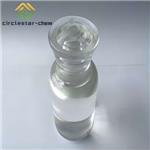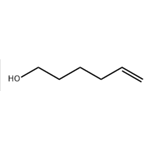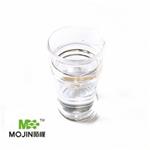Background
Enol is an important fine chemical, such as isophytol, folyl alcohol, etc. It can be further used as a critical intermediate for synthesizing medicines, pesticides, essences, spices and the like with high economic added values. It has a large market demand. 5-Hexen-1-ol is a common organic synthesis and medical intermediate and an essential raw material for chemical engineering and medicine.
Chemical Properties
Clear, colorless liquid with a green aroma.
Uses
5-Hexen-1-ol is used in cyclization to a tetrahydropyran by phenylselenoetherification. It is also used as a building block in synthetic chemistry. Further, it is used to prepare 6-bromo-hex-1-ene by reaction with phosphorus tribromide.
Preparation
5-hexen-1-ol may be prepared from 2-(chloromethyl)tetrahydropyran according to the literature procedure for the preparation of 4-penten-1-ol (Brooks, L. A.; Snyder, H. R. Org. Synth. Coll. Vol. III 1955, 698).
Application
5-Hexen-1-ol is used as a food flavouring agent and as a raw material in organic synthesis for cyclisation to other compounds such as tetrahydropyran via phenylselenide etherification.
Aroma threshold values
Medium strength odor; recommend smelling in a 10.00% solution or less
Synthesis
6-bromo-1-hexene is used as a raw material, and tetrabutylammonium bromide is used as a catalyst. In an acetonitrile solvent, it is heated to react with potassium acetate. The mixed solution is then cooled to room temperature (18-25°C), the reaction solution is concentrated under reduced pressure, and then water is added to dissolve; methyl tert-butyl ether is added and stirred to separate the layers, the water layer is extracted once with methyl tert-butyl ether, the organic phases are combined and filtered, and the filtrate is concentrated under reduced pressure. The concentrated solution begins to hydrolyze, and 15% alkaline aqueous solution and methanol are added to the concentrated solution. The mixture is stirred at room temperature to dissolve each other; after the hydrolysis is completed, the methanol is concentrated under reduced pressure. After concentration to dryness, the system begins to separate into layers, with an upper organic phase and a lower aqueous phase. The aqueous phase is extracted twice with dichloromethane, and the combined organic phases are concentrated under reduced pressure to obtain 5-Hexen-1-ol.







